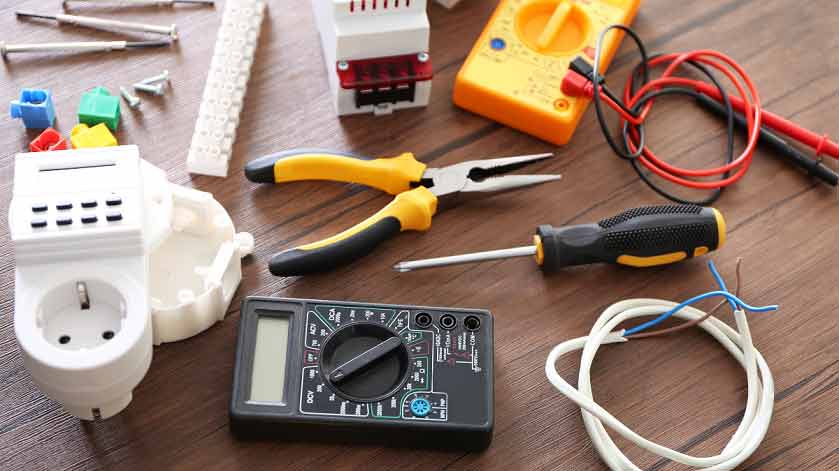
Do you have an electrical appliance in your house or shop that appears strange? Perhaps it regularly overheats, sparks, or appears hazardous.
If this describes your present condition, you require portable appliance testing. It is an effective way for eliminating electrical hazards in the workplace and public areas. This procedure can prevent electrical fires caused by malfunctioning equipment while also ensuring safety requirements.
Don’t be intimidated by the procedure when you have this simple guide to Electrical Portable Appliance Test (PAT) testing. We’ve broken down the whole PAT process into manageable portions, covering everything from what PAT testing is to its thorough protocol. Let us maintain your devices running smoothly and provide you with piece of mind.
What does PAT Testing mean?
Have you ever wondered what the “PAT test” is for your electrical appliances? Portable Appliance Testing (PAT) is the process of testing any electrical equipment to guarantee the safety of its users. It is an important precaution for avoiding electrical accidents such as fires, burns, and electric shocks. When the equipment has been PAT tested, you will receive a certificate.
Although the name “PAT testing” appears to be particular, it may alternatively be referred to as “electrical safety testing” or “equipment testing.” Don’t be fooled; all of these phrases refer to the same process: assuring the safety and operation of portable electrical products. This test may be either:
- Visual
- Technical testing
You are not legally required to only complete the PAT test for the electrics. Instead, you can use any suitable procedure for the same goal. However, PAT testing is one of the most dependable and simple processes available. So it would be helpful to learn how to do PAT testing in accordance with the IET 5th Edition Code of Practice.
What is one example of a PAT test?
Now, let’s look at a popular scenario to better comprehend the PAT test. Assume you are checking a kettle in the office. As a result, a professional will utilize a PAT tester to thoroughly inspect any type of damage, particularly frayed main cable wire.
Then, they will use an electric tool to determine how safely the electric is operating. They must verify the targeted equipment is properly insulated and wired. This eliminates the possibility of producing an electrical fire or shock when using it.
Why do I Need a PAT Test?
First, you should be aware that appropriate PAT testing requires insulating resistance, ground connection, and proper wiring. Here are few arguments that clearly show why PAT is necessary:
According to the Electricity at Work Regulations 1989, employers are required by law to repair broken equipment and keep it in good working order.
PAT is a routine examination that ensures a safe environment for the users and others around them.
It helps to reduce the likelihood of shocks, fires, explosions, and other calamities.

PAT Testing Requirements and Equipment
In general, a PAT tester is used to automate electrical testing, and electrical PAT tests are not confined to portable products. Instead, you may have several products checked with PAT, such as:
Power wires and extension leads.
Any kind of non-portable appliance weighing more than 18 kg.
Any portable appliance weighing less than 18 kg.
All devices, whether plugged and fixed or not.
Office equipment including Photocopiers, computers, and printers.
Kitchen electronics such as kettles, refrigerators, and microwaves.
Power tools used in the industries.
PAT Testing Procedures: A Step-by-Step Guide
Every employer is required by the Act on Provision and Use of Work Equipment to maintain electricity. You may even achieve it by knowing about the following method of frequent PAT tests:
- A visual checkup to spot any cracks in the main cord or cuts.
- Insulation resistance testing.
- Checking ground continuity.
- A polarity test for correct wiring.
- Ensuring good functionality.

How Long Does PAT Testing Take?
The timeframe for PAT testing is around 5 to 10 minutes for a single check. But the PAT test duration varies according to the given factors, and hence, no one knows how long it might take:
A number of faulty appliances.
Type of building in high-risk environments.
Get your PAT Certificate today to keep your home and business safe!
Landlords and company owners must follow conventional safety requirements to safeguard people’s safety. A portable appliance test has made this task much easier. However, you must continue to monitor developments on how to keep your electronics safe.
If you have any questions about the procedure or want a professional PAT test for electrical appliances and equipment, please contact Nationwide Surveyors.

FAQs about Portable Appliance Testing
1. What is the purpose of the PAT test?
A PAT test is designed to keep the environment safe by detecting any flaws in electrical equipment. This is especially typical in high-risk situations where power tools are employed. PAT testing is used by experts to assure that no electrical dangers exist in any working environment.
2. Who can do PAT testing?
Any certified or experienced individual can do portable appliance testing. The reason is that the official regulations do not need you to hire an expert for PAT testing. However, we never advocate that you take the PAT exam on your own, especially if you are not a technician.
3. What is the legal requirement for PAT testing?
PAT does not have any special legal duties. It is not even necessary to do a PAT test to ensure the safety of utilizing electrical equipment. Instead, you can use any approach that accomplishes the same aim because, as an employer, you are required to ensure a safe working environment under the Health and Safety at Work etc Act.
- How is a washing machine put through a PAT test?
A washing machine’s external components or appearance can be examined to perform a PAT test. Verify whether it appears cracked or damaged. You also need to attest to the plug’s and cable’s excellent condition. For example, the switch and cable should not be worn or broken.
5. What do you mean by the load test for PAT testing?
Measuring the current load that an electrical device is drawing in is the most basic definition of the load test for PAT testing. It’s an easy way to determine if the equipment is safe to use or not. One advantage of PAT load testing is that it may be used by someone with no technical experience to verify the security of their equipment.
Source: Housesitmatch.pro/
We appreciate you visiting MyNewsGH, a Ghanaian news publishing website. You are welcome to follow us on Facebook, Twitter, Instagram, and other social networking sites and to share this news there as well.

